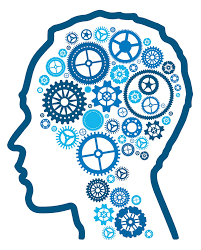Augmented Intelligence, Not Artificial Intelligence: E-learning’s Game-Changer

In reality, however, there are limits to what artificial intelligence can do: machines don’t make good decisions on their own, and they’re not creative. Examples of the limitations of AI abound: Last year, for example, trolls corrupted Tay, Microsoft’s Twitter bot, so badly she had to be taken offline. This month an AI is trying (and failing) to write the first sentence of a novel.
So AI isn’t quite there yet. Enter IA, or Augmented Intelligence. Augmented intelligence doesn’t seek to imitate human consciousness. Instead, it amplifies human intelligence. You’re probably using it already: Alexa, Siri and OK Google are all IA technologies. They don’t make decisions on their own, but they improve your ability to make good decisions by offering you a connection to society’s collective memory: the Internet.
Simply put, IA pairs the things people do well (creativity, learning, and making appropriate decisions) with the things machines do well (remembering, storing and parsing data) so both humans and machines can be better at their jobs. As it turns out, researchers are more interested in IA than AI; according to Andrew Moore, dean of Carnegie Mellon’s School of Computer Science, 98 percent of researchers are focused on creating intelligent systems that help people make better decisions, rather than making machines that make decisions on their own.
While augmented learning can sound daunting, it’s not new. If you’ve ever used a calculator — which performs math so you don’t have to — you’ve used a kind of augmented machine learning. So how does augmented intelligence work with today’s e-learning?
The rise of the chatbots
Chatbots are probably the best example of intelligence amplification in L&D; they function more or less as the Alexa of e-learning. For example, if a learner knows they need help with a skill, an e-learning chatbot can direct them to a relevant course they haven’t taken yet. A chatbot can also point out gaps in training; if a learner hasn’t completed a required compliance course, the bot can remind them to do that. That kind of function saves the learner from forgetting a mandated course and also saves their manager from having to nag their staff.
Such reminders are also helpful when it comes to information retention. A chatbot can reinforce a skill learned in a course by sending a message to an employee, reminding them to use that new skill. Learners tend to forget a lot of what they learn quickly — Edgar Dale’s Cone of Experience suggests that people retain 10 percent of what they read and 20 percent of what they hear — but reinforcement can boost those numbers to 90 percent if a learner actually performs the skill they read or heard about. A chatbot can help with that. For example, if an employee takes an updated compliance course at home in the evening, an e-learning chatbot might send a message the next day to remind the employee of what they learned while they are at work.
Personalizing learning
Another form of IA is personalized learning. Personalized learning sometimes takes the form of an adaptive platform or LMS that changes a course based on the performance of the individual learner. Sometimes that’s as simple as giving students who fail certain questions on a quiz more material to work through until they pass.
Sometimes, however, personalized learning can be delivered by a chatbot. The conversational nature of a chatbot means that it can act as a private tutor, answering questions and meeting each learner’s individual needs.
Chatbots can also be used to deliver training independently of a course to whichever employees need specific information. Say a company requires all new hires to take a course about policies and procedures. The course is updated regularly, which means new hires always have the most recent information, but long-time employees might not know which policies have changed. A chatbot can deliver information about updated procedures directly to the employees who went through older versions of the onboarding course, so that everyone is on the same page.
Using IA to collect and analyze data about learners
Learning platforms are capable of generating a lot of data about the learners who use them. While that kind of data is often attractive to CLOs who want to understand what learners are doing and how well they’re learning, the human brain can only take in so much information at a time.
Augmented intelligence can help trainers and L&D leaders analyze and understand this learning data. There’s already a model for this in the healthcare industry. Doctors have access to a tremendous amount of patient information and medical imagery. Watson (you might remember Watson from Jeopardy!) is helping doctors sift through and analyze medical images so that they can make better, more accurate diagnoses.
Higher education is also starting to use this model, implementing “early-alert systems” for students enrolled in online and hybrid classes. These systems often monitor student behavior in class and out of it, to identify the students who may fail or drop out. When a struggling student is identified, the program notifies professors or other mentors that the student needs an in-person intervention. It’s a model that can work in L&D as well.
IA is a tool for e-learning
When you think about e-learning, online courses may spring to mind, but tools are just as much a part of online learning as course content is.
That’s what augmented intelligence is — a learning tool that can be used as part of a course, to help a student do well in a training program comprised of many courses, or be used independently of a course. It helps trainers be better at their jobs by analyzing data for them. It can identify at-risk learners and offer one-to-one tutoring.
We don’t know the full extent of what augmented intelligence can do when it comes to e-learning yet — as with all tools, it will take human imagination to bring out IA’s full potential.





